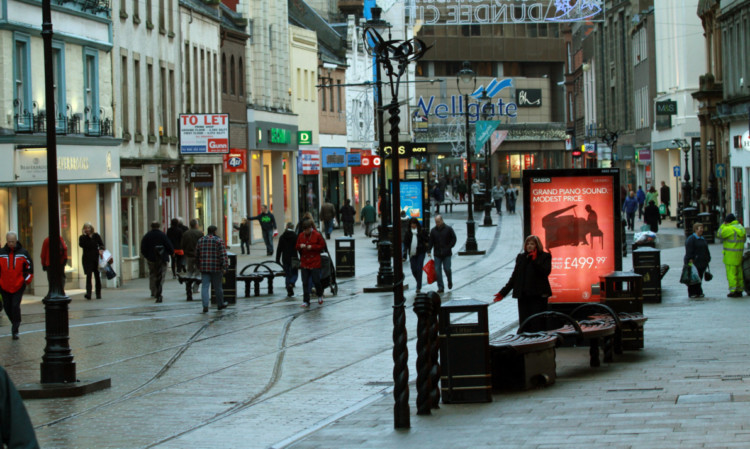A report calling for fresh ideas on revitalising Scotland’s high streets has highlighted a squeeze on retail margins and a spike in shop vacancies in Dundee and Fife.
The number of void units fell in Edinburgh, Glasgow and Aberdeen over the past five years, leaving Dundee as the only major Scottish city where the number of boarded-up units has increased.
GVA James Barr’s fifth annual Scottish Town Centres report shows that in 2008, just under 10% of the retail floorspace available in Dundee was vacant. That figure had jumped to 17% by last year.
Of the 20 cities, principal towns and new towns considered in the report, Glenrothes was found to have the highest proportion of unused retail space at 30% almost double the void rate of 2008.
Of the remainder, only Cumbernauld, Paisley and East Kilbride had a vacancy rate in excess of 20%.
Dunfermline and Falkirk came in at 18%.
The report’s authors said it was clear that “structural change” was occurring on Scotland’s high streets, with the economic downturn of the past years continuing to weigh on investor confidence and the trend for online retail having an increasing impact.
The study found that a number of major retail developments, including a long-mooted extension of the Overgate mall in Dundee, remained in the pipeline but had not been pursued.
“They (town centres) are becoming accustomed to no longer being the location where the majority of trade and activity in a particular catchment occurs,” the report states.
“Despite the scale of many development pipelines, very little new floorspace is being brought forward in traditional town centres and, in our view, fresh thinking is required.
“The cost of doing business in town centres has increased in relative terms. Business rates set in advance of the recession now account for a disproportionately high percentage of total occupancy costs for retailers.
“The decision to delay the rates revaluation in Scotland has exacerbated the situation.”
The study found that of the occupied space in the 20 towns, the largest proportion in each location was given over to “comparison” retailers selling clothing, jewellery and sporting goods as well as DIY products and furniture.
Convenience stores selling everyday essentials were an increasing presence, while the service sector comprising offices to takeaway restaurants was also a major part of the high street make-up.
In Edinburgh, the service category accounted for 34% of all floorspace, while it was 28% in Perth and 20% in Dundee.
Richard Slipper, director of planning, development and regeneration at GVA James Barr, said “funding challenges” were leading some developers to rethink new retail schemes which had already received planning consents.
“In many Scottish cities and towns, the impact of the economic downturn has knocked the confidence out of the build-out rate,” Mr Slipper said.
“There is a need for the public and private sectors to introduce initiatives to help bridge the funding gap to kick-start some of the more ambitious schemes in the pipeline.
“The likes of Edinburgh’s St James scheme and the planned Glasgow Buchanan Galleries and Dundee Overgate extensions are all in the pipeline, but lack of funding confidence has proved to be a sticking point.”
Mr Slipper said revitalising Scotland’s town centres would take imagination and innovation as well as major investment.
“We would suggest local authorities and private investors critically appraise prime areas for investment as these are crucial to an economic recovery,” he said.
“Some town centres might have to shrink this to get the best deals but there are also opportunities for offices, leisure, culture and residential to make their way back into town centres.
“Central Government needs to encourage the public sector to relocate civic, education and health facilities in the high street.”
